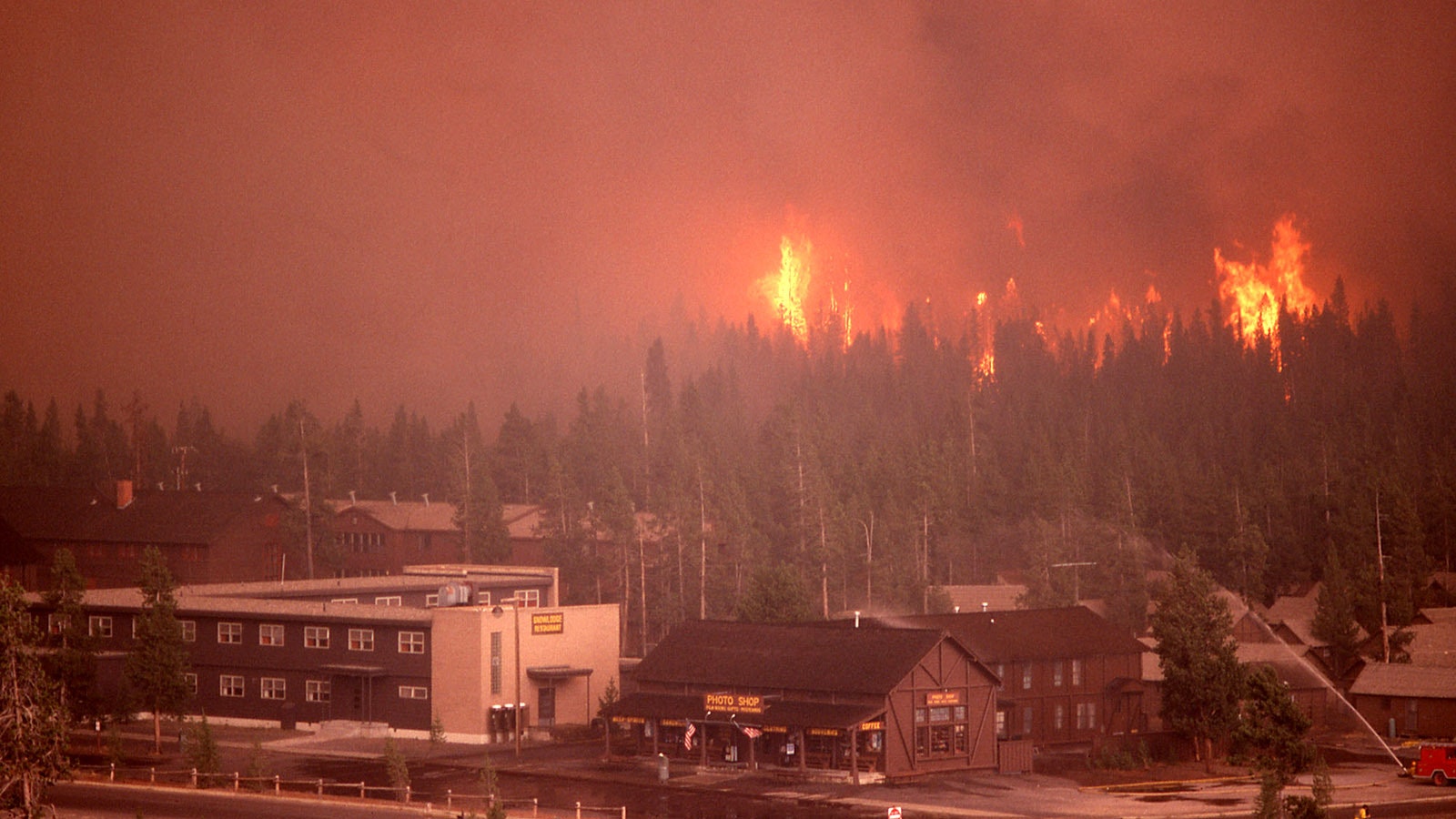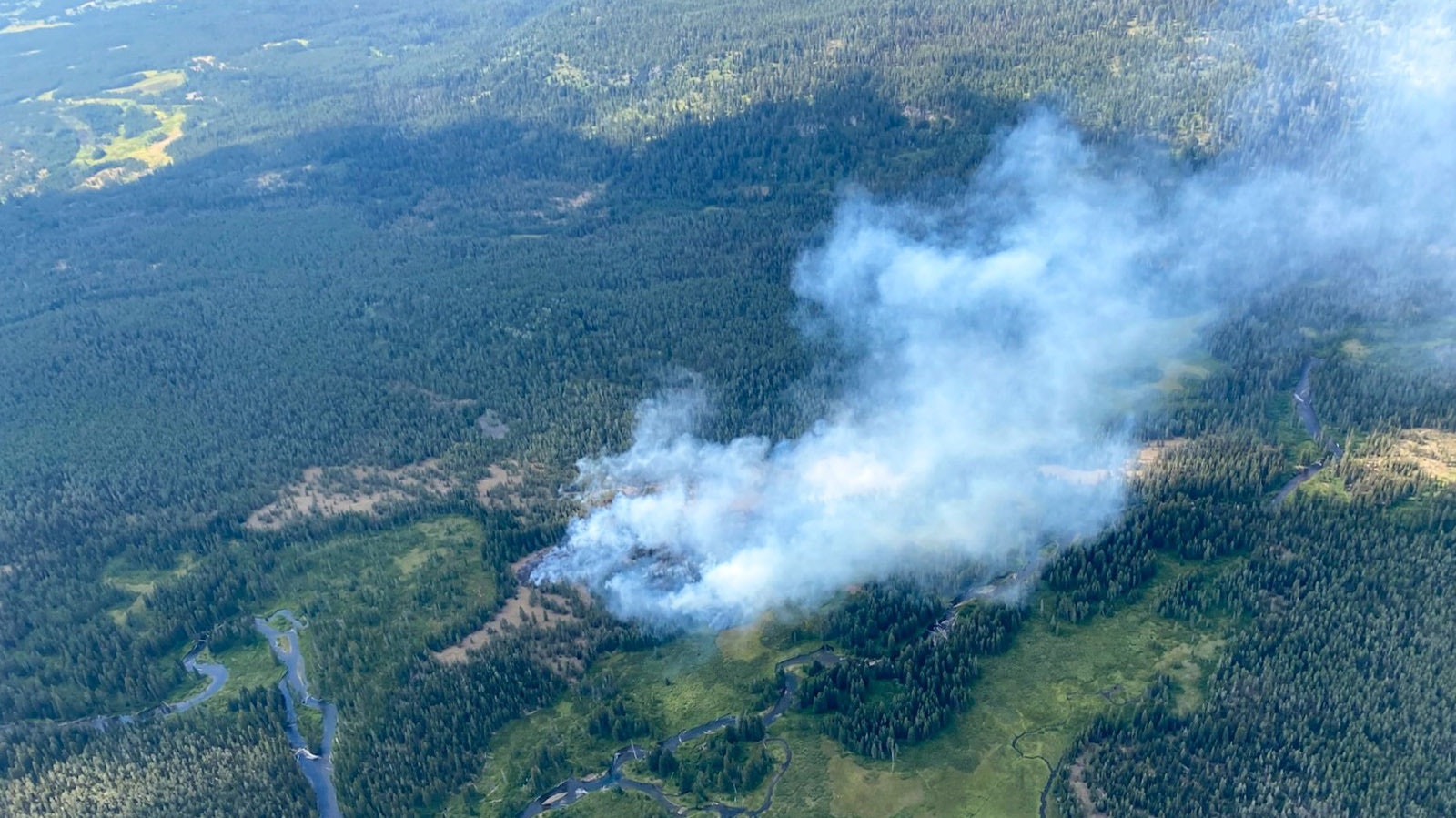Hundreds of lightning strikes and dry conditions have Yellowstone National Park fire crews on high alert.
A 10-acre fire in the vicinity of the Bechler River Soldier Station was sparked by lightning on Wednesday, prompting an aggressive response that included Yellowstone helitack crews on an aerial reconnaissance mission.
The “immediate response” included 25 personnel, U.S. Forest Service smokejumpers, a park helicopter with crew, Yellowstone’s Fire Module, a Type 3 helicopter, and a heavy helicopter.
The Ash Fire is the latest of 18 wildfires that Yellowstone’s fire crews have responded to so far in 2025. With the park’s fire danger currently at “High,” there could be a difficult fire season ahead.
As of Friday, the fire was listed as “active” by the national park.
While 10 acres may not seem large for a Western wildfire, officials are hyper-vigilant to catch fires early and not have a repeat of the devastating fires of 1988, when 800,000 acres of Yellowstone went up in smoke.

Taking No Chances
Yellowstone is a fire-based ecosystem, but that doesn’t mean anybody managing the park is following the “burn baby burn” policy that was so controversially cited said by Don Despain, a plant ecologist with the National Park Service, during the 1988 Yellowstone wildfires.
That summer, there were 42 lightning-caused wildfires in Yellowstone and nine caused by humans.
They burned nearly 800,000 acres, roughly 36% of the park’s acreage, and 10,000 people took part in firefighting and $120 million was allocated to fire suppression efforts.
Most of the fire suppression prioritized people and infrastructure, like the Old Faithful Inn, over saving the landscape.
These decisions were controversial at the time, but a review of the overall firefighting effort later concluded that the efforts were sound and the only thing that could have contained the fires was the moisture from the snow that arrived in September.
The last significant fire in Yellowstone was the Lone Star Fire, a lightning strike that ignited Aug. 22, 2020, and burned nearly 1,000 acres before it was contained and extinguished.
Since it was only 3 miles from Old Faithful, fuel reduction around historic buildings, power lines and communications equipment was prioritized during the park’s fire suppression efforts.
When Lightning Strikes
The Ash Fire remains in “active” status, which means it hasn’t been contained, controlled or put out. What that doesn’t mean is it’s out of control.
There are five other fires in Yellowstone categorized as “controlled,” which means they have been contained and the likelihood of them increasing in size is low.
All these controlled fires were caused by lightning strikes, which are a constant fire hazard in Yellowstone, the park reports.
“The park has received over 350 lightning strikes in the last 24 hours,” the park said in a statement about the Ash Fire. “In recent weeks, over 500 lightning strikes from thunderstorms have resulted in six wildfires in the park’s backcountry.”
That’s typical at this time of year.
Cowboy State Daily meteorologist Don Day said late summer is dominated by afternoon thunderstorms that usually bring lightning but only sometimes bring rain.
“The thing that folks always have to remember about thunderstorms around this part of the country is that you can get 60 mph wind gusts and lots of lightning,” he said. “People don't take lightning as seriously as they should, in terms of how deadly it can be, and the lightning can be frequent with these thunderstorms.”
If these thunderstorms can tap into a surge of subtropical moisture, they can dump a lot of rain in a short period of time. However, dry conditions and an atmosphere devoid of moisture don’t stop storms and lightning from forming, which explains the lack of rain and abundance of lightning strikes in Yellowstone.

Getting Drier
Day has been concerned about the increasing dryness in western Wyoming. The entire Greater Yellowstone region is categorized as “abnormally dry” or experiencing “moderate” or “severe” drought conditions.
Yellowstone’s current fire danger has been set at “high” since July 10.
At this time, there are no fire restrictions in place or planned in the park, although some backcountry trails and campsites have been closed because of the Ash Fire.
“These thunderstorms form in the afternoon and evening hours,” Day said. “They don’t last long, but the risks of lightning strikes are still high.”
In 2025, so far, there have been eight lightning-caused fires and nine human-caused fires in Yellowstone. Most were less than an acre in size, and the Ash Fire is on track to be the largest this season.
The response to the Ash Fire was immediate and aggressive, so it’s unlikely to grow much larger. But it’s a potent reminder that fire season is just getting started in Yellowstone and Wyoming.
“We got through June and most of July unscathed, but there's still going to be good chances for lightning-induced fires in areas that are already dry,” Day said. “We need to be highly vigilant of lightning-initiated fires, because we’re going to see an increase in thunderstorms and lightning strikes as we get further into summer.”
Andrew Rossi can be reached at arossi@cowboystatedaily.com.





